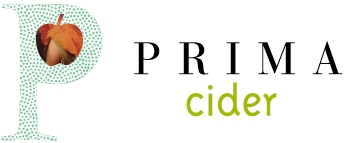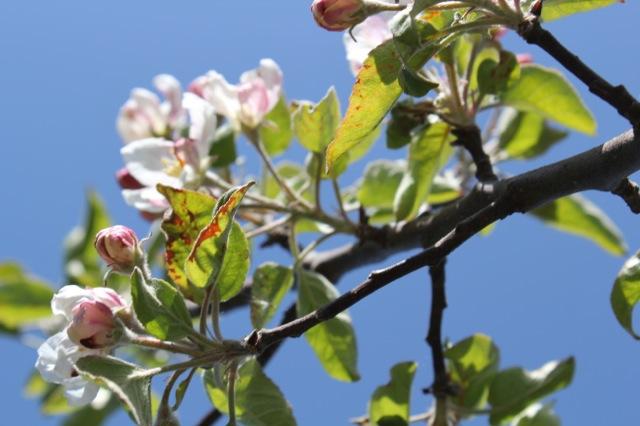Prima Cider Rides the Hard Cider Wave
Imagine a fermented beverage that was once popular and jovial, then ravaged by prohibition, finally driven to the brink of extinction, only to be kept alive by farmers and locavores for decades. Years later, the same drink slowly experiences a renaissance. Recognized for its unique and varied taste profile, the beverage makes its way from craft brewers to the mainstream. This is the story of fermented cider; a left-for-dead libation that is now undergoing a renaissance in the restaurant and bar scene of the Midwest.
For the Bertsche family of Long Grove, Illinois, cider is a tradition that began three generations ago in Germany with a Grandfather who enjoyed making his own farmhouse style ciders. Lately, cider has become more than a family tradition enjoyed with meals— Patriarch, Richard Bertsche; and his three sons: Erich, Tristan, and Martin; along with nephew, Carl Maier, are now making noteworthy ciders themselves. Joining the growing ranks of ambrosial Midwest ciders is the Bertsche’s Prima Cider.
Prima Cider currently offers two styles of cider: Most, a simpler, farmhouse-style cold cider; and Brut, which is the Champagne-style sparkling cider, perhaps more common to the American palate. Prima Brut has done well in restaurants seeking a higher end cider that can be paired with foods, according to Richard Bertsche.
“We’re just making cider the way we know it to be — a dry, fully fermented cider — the way we always had it in Southern Germany,” says Erich Bertsche.
Bittersweets are high in tannins and sugars, while being low in acids. They provide structure and a bitter taste helpful for balancing ciders.
Bittersharps have high tannins and high acid content. They add astringency, but lack the range of a Bittersweet.
Sharps are known for their usually high acid content and are seen less frequently than other types of cider apples.
Sweets are high in sugar and also in acid. They’re used to round out ciders, and render anything too intense in flavor more palatable.
National Association of Cider Makers in the U.K. cideruk.com
At Prima Cider, the process starts with the right combination of local heirloom, antique, and cider apples to achieve a full, balanced flavor. As Richard Bertsche puts it, “Cider is governed more by the quality of ingredients than by technology and chemistry.”
Cider apples can be broken down into four main classifications: Sweet, Bittersweet, Sharp, and Bittersharp (see sidebar for more details). Each style of apple contributes its own character and flavor profiles to the cider. While leveraging a variety of apples may seem straightforward, it’s actually remarkable, given that many of the hard cider-making varietal apples were nearly wiped out during prohibition. Prima sources its apples from Michigan, Wisconsin and Illinois.
Erich Bertsche elaborated on the family’s Prima Cider blend, “We place a priority on Old-English and American varieties. We also use crab varieties in our mix because they’re the only true American variety with high tannins.“ Tannins are important to cider, providing astringency just as they do in wines.
After the desired apple blend is selected, the process of fermentation begins. The Most cider goes through one fermentation and the Brut goes through two. After the apples are pressed, the fresh juice is inoculated with select yeast strains. The fermentation process for both ciders lasts for one to two weeks in stainless tanks. Next, both ciders are transferred to the final slow fermentation vessel and kept at a low temperature in an underground cellar.
Erich Bertsche of Prima Cider with 20 litre KeyKeg containers awaiting shipment to restaurants
The cider stays here for up to 16 weeks. During this period, it is racked multiple times which naturally clears away much of the sediment.
Once the cider is fully fermented, it’s blended again with different mixtures of cider from other tanks to perfect the flavors. The Bertsches create their blends by keeping multiple tanks; each with a different mixture of cider apples and yeasts. Once they’ve created the desired taste, the cider is either cask or bottle conditioned. Typically four weeks later the Most (still) cider is ready for consumption. For microbial stability, the Bertches said they use a combination of sulfides, filtration and UV pasteurization.
The fermentation process continues in the bottle for the Brut or Method Champenoise cider which retails for around $23 a bottle in Chicago. The Brut bottles are cellared anywhere from 12-18 months with additional fermentation taking place on the lees. The finished Most Cider has about between one and two atmospheres of pressure and the Brut has five atmospheres of pressure (or 73.5 psi) which requires Champagne style bottles. After about 12 months, bottles are riddled and degorged by hand.
These rigorous standards are paying off in spades for the Bertches whose cider is now in 14 restaurants and bars in the Chicagoland area. Despite this growing popularity, craft ciders are still somewhat unknown to the larger public. Today’s ciders, such as Prima Cider, could be among those that shape consumer preferences. According to Eric Bertsche, it’s an opportune moment to be in the premium cider business. “Many of the restaurants or bars will taste our cider and be completely blown away because they’ve never had anything like it,” says Eric.
Joe Darling, beverage director at the recently opened Au Cheval diner, which carries Prima Cider says, “We took great pains to compose a selection that represented all styles of beer and we wanted a cider because it’s a subsector of craft brewing. Prima is everything you’d hope for in a cider. It’s a great traditional cider made locally. It’s not overly sweet; it’s complex, and perfect to round out our selection here.”
When speaking of Prima Cider, Eric Bertsche says, “Our biggest attributes are that we make a dry, full-bodied cider. We believe that our unique taste comes from our cold cellaring process; the apples we use, and the fact that we give it time to develop into a more complex drink. We strive to create a cider we like to drink.”
Source: Midwest Wine Press

